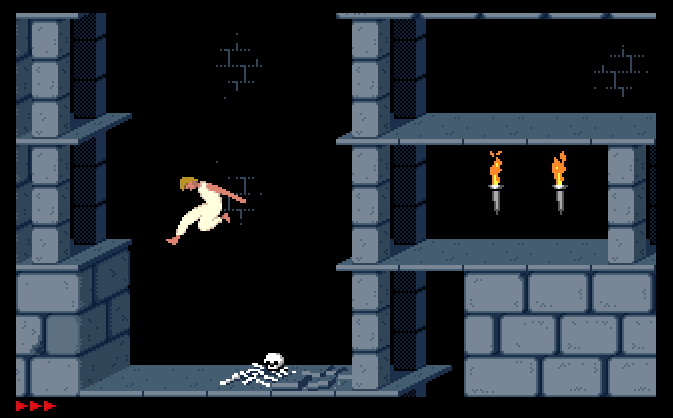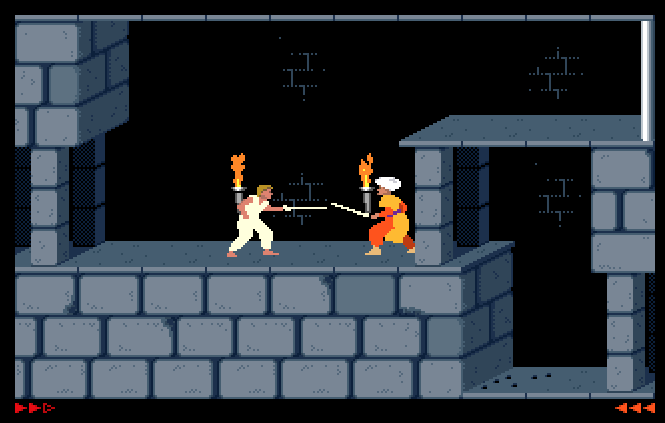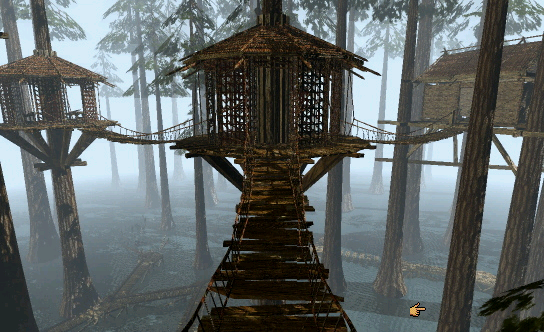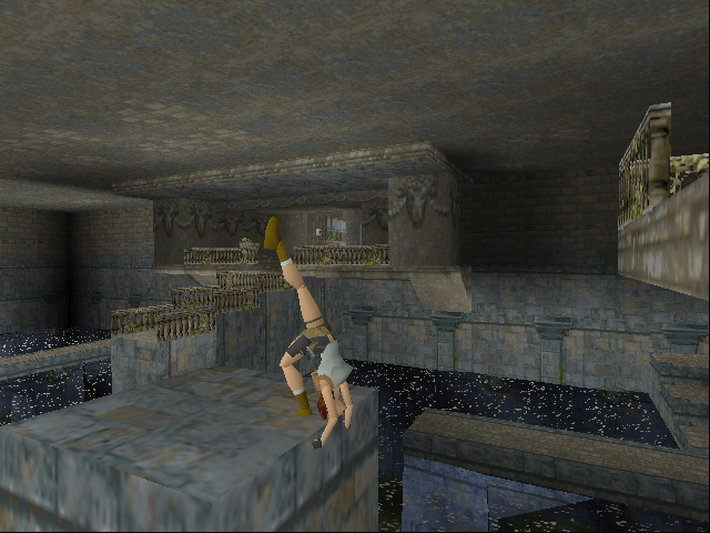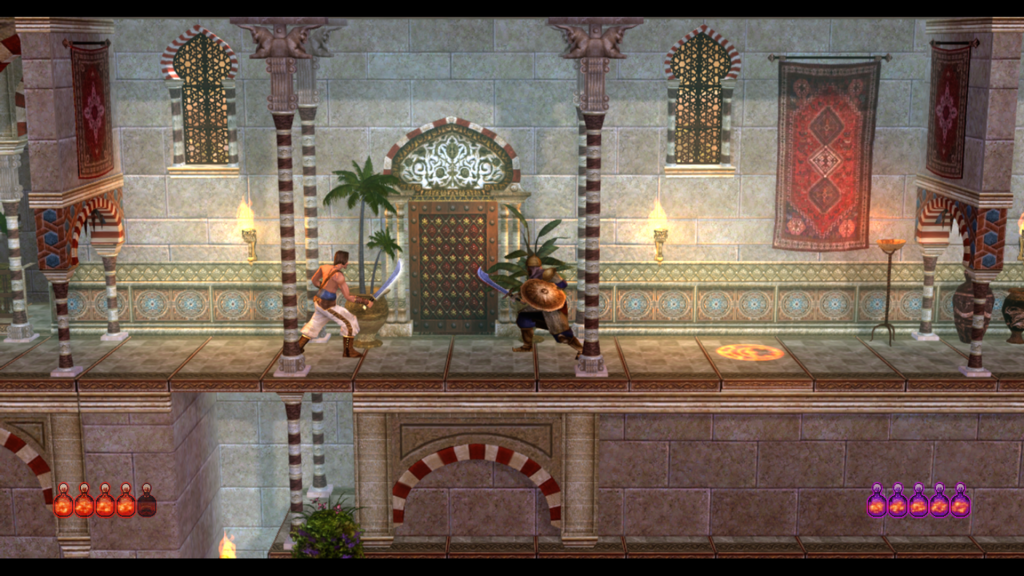Have you ever considered what makes a game look good? Maybe it’s the backgrounds, some will say it’s the lighting, others yet the texture work. Well, we could make a case that it’s about all of that together. But perhaps the most important thing is the quality of the animations.
Think back to the 80’s. The Atari 2600 was on its way out, and the IBM PC was about to conquer the collective minds of humanity with its… uhm… 16 colors and no hardware scrolling. Okay. So at the time, animations weren’t really a concern. If your game had graphics at all, you were probably in a good place. King’s Quest let you move your little dude Graham! Amazing stuff. Even a powerhouse such as the NES wasn’t really concerned with animations. Difficult to hold several frames when your cartridge was filled up by a few lines of code. But 1989 eventually arrived and it was time for something more. It was time for… Prince of Persia.
A standard walking animation must be easy to make. Like, you make a standing sprite, then a sprite with the left leg forward, and then another one with the right leg forward. Mix them up a bit and you get a walking animation! (disclaimer: I have no idea how sprites creation works, I imagine it’s pretty hard actually). So when people saw the life-like running and jumping of the prince, they were amazed. He didn’t just look so realistic – it was also impressive that he would flow from running to jumping in a natural manner. What was that? Did they just waste their entire development budget on animations? Surely this was the future.
You could argue that such a big focus on making sure that the animations would flow smoothly, meant that there was no way you could make a responsive game. If you need to make your characters jump in a realistic manner, then instantaneous jumps such as those seen in Mario and Sonic are impossible, right? Well, the future would eventually disagree, but we’ll go over that later. For now, let’s gape in amazement at those sword duels. In 1989, there was little better.

Of course, animation being important is not news, and not just for games. People often think of Disney’s renaissance era movies and marvel at just how good the animation quality was back then. And if you remember Robot Carnival, one of the short stories had such detailed animations for its characters that it actually crossed the uncanny valley. A great-looking cartoon will be praised… but nobody will ever say that Arnie in The Running Man had such great running quality. That would be ridiculous. Because you see, a cartoon is 2D, and real life is 3D. Nobody expects anything other than life-like movements in real life. And said real life was coming fast in the videogames world.
It wasn’t as sudden as I’m making it sound. Another World was a 2D game, but it used actual polygons to great effect. Just like Prince of Persia, that game prized itself on its animations that looked way better than what you could achieve with sprite-based work (but notice how it was equally unwieldy). And of course games like Alone in the Dark on one hand, or System Shock on the other, did a great job of mixing 2D and 3D. But we were reaching a conundrum fast. The movements in AITD were great for its time, but barely acceptable after a while. And nobody cared that the aliens in Duke Nukem 3D had maybe ten frames of animation total. But true 3D was a different matter.
When your entire world is 3D, you have to keep up appearances. And Tomb Raider showed the world what smooth animations meant in the 3D space. Lara Croft might have been defined by her pointy chest for many, but for many others she jumped and ran and grabbed ledges and somersaulted. Yes, the last bit was too much, but it all helped. It was also important to see that, just like Another World, the animations weren’t just good by themselves, these actions all flowed into each other quite naturally, of course given the limits of the era. And now that was the new standard. You can get away with iffy animation in 2D games. Maybe some early 3D stuff such as Quake would also get away with relatively few frames for its models, and people were too busy shooting fiends to notice. But an adventure game in 3D? You better had good animations, or you were going to get laughed out of the classroom.
So what about the originator, Prince of Persia? When it made the jump to 3D, it knew it had to deliver on that regard. And Prince of Persia 3D is… interesting. I’m still going through it, there’d be much to say about this ambitious yet broken mess of a game, but here and now I’ll just point out that it even one-upped Tomb Raider in how the titular prince moved. All actions follow each other in a natural manner. Sword fighting is quite a sight, a flurry of dramatic poses and blows exchanged, with light trails and tense music for good measure. Yet the game inherits the same problems as its predecessor and even amplifies them. There’s so much lag in your actions, a running jump requires a great deal of momentum, and to be fair even the sword duels don’t really work outside of the supposed spectacle. Prince of Persia 3D wanted to do too much, but Tomb Raider was already skirting the limits of what was deemed acceptably slow controls. And thus, our prince failed.

Modern technology eventually gave us motion capture (although it was pioneered super early by Virtua Fighter 2, it didn’t become popular until the PS2 generation). Suddenly life-like animation became the norm, and devs also started seeing the value of snappy controls. Compare Shadowman to Tomb Raider: less precise maybe, but much more playable. In fact, there’s actually something to be said against the search for the most realistic animations (it is one of the reasons why Red Dead Redemption 2’s controls feel so heavy: you gotta wait for your characters to actually complete his actions).
But what about 2D? It may have become old news after polygons rocked our collective socks, but many devs didn’t stop using it. And then, eventually, Abe’s Oddysee showed that it was possible to make a game similar to Prince of Persia actually responsive. Abe runs and jumps like how you wanted the prince to run and jump. And then, possibly inspired by that game, the Prince of Persia Classic remake comes out in 2007. It’s almost a different game: even though the levels layout and basic gameplay loop is the same, the Oddworld feel permeates the whole thing. Now it’s the prince who runs and jumps like Abe did. Admittedly, it makes for a more playable experience (also because you get some quality of life enhancements for a much easier time), even if the graphics were old-looking and the animations at that point didn’t wow anyone anymore.
I’m in a Prince of Persia mood right now. I still have to get through POP3D. I want to try and finish it, despite its issues. And then I’ll have the 2008 game and the DS spinoff… quite the haul. Who knows if those modern games will have had the same effort put into animating the prince’s movements. However, given the predecessors, I’m hopeful. If nothing else, that my player character will move in a manner that befits the Prince of Persia.

